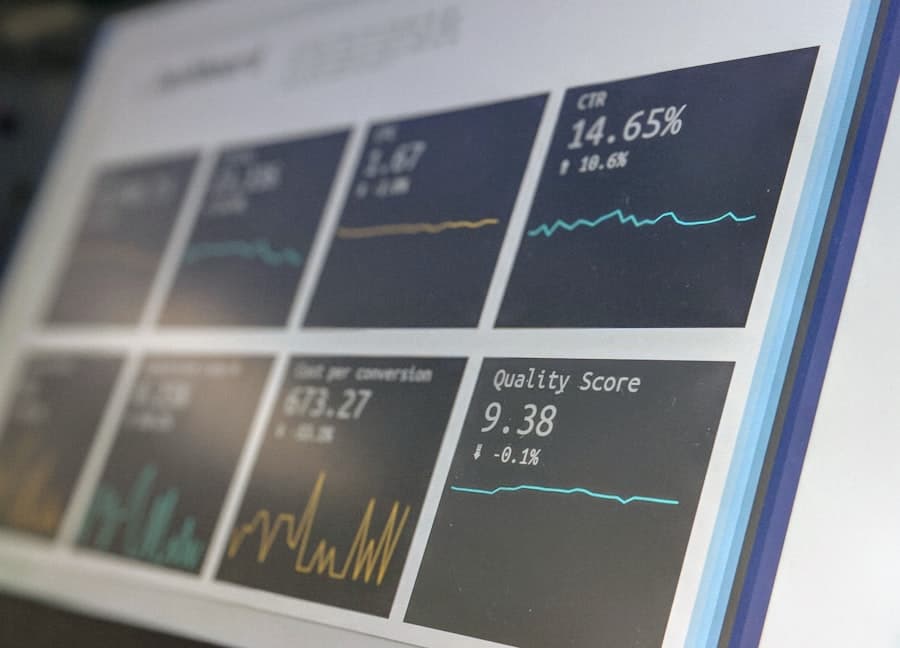The landscape of microfinance has undergone a significant transformation in recent years, largely due to the advent of artificial intelligence (AI). Microloans, which are small loans typically aimed at individuals or small businesses lacking access to traditional banking services, have become a vital tool for economic empowerment, particularly in developing regions. The integration of AI into this sector has not only streamlined operations but has also enhanced the ability to assess risk, making it easier for lenders to make informed decisions.
As microfinance institutions (MFIs) seek to expand their reach and improve their services, AI emerges as a powerful ally, capable of analyzing vast amounts of data and providing insights that were previously unattainable. AI technologies, including machine learning algorithms and natural language processing, have the potential to revolutionize how microloans are evaluated and disbursed. By leveraging data from various sources—such as social media activity, transaction histories, and even mobile phone usage—AI can create comprehensive profiles of borrowers.
Key Takeaways
- AI is revolutionizing the microloan industry by improving risk assessment processes and increasing access to credit for underserved populations.
- AI plays a crucial role in risk assessment for microloans by analyzing large volumes of data to predict creditworthiness and default risk.
- Using AI in microloan risk assessment offers advantages such as faster decision-making, more accurate predictions, and reduced operational costs.
- Challenges and limitations of AI in microloan risk assessment include data privacy concerns, algorithmic bias, and the need for human oversight.
- Ethical considerations in AI-powered risk assessment for microloans include ensuring fairness, transparency, and accountability in decision-making processes.
The Role of AI in Risk Assessment
Limitations of Traditional Risk Assessment
Traditional risk assessment methods have limitations, particularly for individuals without formal banking histories. Credit scores and financial statements may not provide a complete picture of a borrower’s creditworthiness.
The Power of AI in Risk Assessment
AI changes this paradigm by utilizing advanced algorithms that analyze a broader range of data points. Machine learning models can identify patterns and correlations within large datasets that human analysts might miss, leading to more accurate predictions of borrower behavior.
Adaptability in Risk Assessment
Moreover, AI can continuously learn and adapt its risk assessment models based on new data inputs. This dynamic capability allows lenders to refine their understanding of risk over time, adjusting their criteria as market conditions and borrower behaviors evolve. For example, if a particular demographic group begins to show higher repayment rates than previously anticipated, AI systems can adjust their risk models accordingly, enabling lenders to offer more favorable terms to those borrowers.
Advantages of Using AI in Microloan Risk Assessment

The advantages of employing AI in microloan risk assessment are manifold. One of the most significant benefits is the speed at which decisions can be made. Traditional risk assessment processes can be time-consuming, often requiring weeks or even months to evaluate applications thoroughly.
In contrast, AI-driven systems can analyze data and generate risk assessments in real-time, allowing lenders to respond quickly to borrower needs. This rapid decision-making process is particularly beneficial in emergency situations where individuals may require immediate financial assistance. Additionally, AI enhances the accuracy of risk assessments by incorporating a wider array of data sources.
For instance, social media activity can provide insights into a borrower’s character and reliability that traditional financial metrics cannot capture. By analyzing factors such as online interactions and community engagement, AI can create a more holistic view of a borrower’s potential for repayment. This comprehensive approach not only reduces the likelihood of defaults but also enables lenders to extend credit to individuals who may have been deemed too risky under conventional assessment methods.
Challenges and Limitations of AI in Microloan Risk Assessment
Despite its numerous advantages, the integration of AI into microloan risk assessment is not without challenges. One significant concern is the quality and availability of data. While AI thrives on large datasets, many potential borrowers in developing regions may lack sufficient digital footprints or reliable data sources.
This scarcity can lead to biased outcomes if the algorithms are trained on incomplete or skewed datasets. Consequently, there is a risk that certain groups may be unfairly excluded from accessing microloans due to insufficient data representation. Another challenge lies in the interpretability of AI models.
Many machine learning algorithms operate as “black boxes,” meaning that their decision-making processes are not easily understood by humans. This lack of transparency can create difficulties for lenders who need to justify their decisions to borrowers or regulatory bodies. If a loan application is denied based on an AI-generated assessment, borrowers may struggle to understand the rationale behind the decision, leading to frustration and mistrust in the lending process.
Addressing these challenges requires ongoing efforts to improve data collection methods and enhance the transparency of AI systems.
Ethical Considerations in AI-Powered Risk Assessment
The ethical implications of using AI in microloan risk assessment are profound and multifaceted. One primary concern is the potential for algorithmic bias, which can arise when AI systems inadvertently perpetuate existing inequalities present in the training data. For example, if historical lending practices have favored certain demographics over others, an AI model trained on this data may continue to discriminate against underrepresented groups.
This issue raises questions about fairness and equity in lending practices and necessitates careful scrutiny of the data used to train AI systems. Moreover, there are concerns regarding privacy and data security. The use of personal data—such as social media activity or mobile phone usage—raises ethical questions about consent and ownership.
Borrowers may not fully understand how their data is being used or may not have given explicit permission for its collection. Ensuring that borrowers are informed about how their information will be utilized and implementing robust data protection measures are essential steps in addressing these ethical considerations.
Case Studies of Successful AI Implementation in Microloan Risk Assessment

Several organizations have successfully integrated AI into their microloan risk assessment processes, demonstrating its potential to enhance lending practices. One notable example is Kiva, a nonprofit organization that connects lenders with entrepreneurs around the world. Kiva has implemented machine learning algorithms to analyze borrower profiles and predict repayment likelihoods based on various factors beyond traditional credit scores.
By utilizing alternative data sources such as social media interactions and community feedback, Kiva has been able to expand its reach and provide loans to individuals who might otherwise be excluded from traditional lending systems. Another compelling case is that of Tala, a fintech company operating in emerging markets like Kenya and Mexico. Tala uses mobile phone data to assess creditworthiness, analyzing factors such as call patterns and SMS usage to create borrower profiles.
This innovative approach has allowed Tala to offer loans quickly and efficiently while minimizing default rates. By harnessing the power of AI and mobile technology, Tala has successfully provided financial services to millions of underserved individuals, demonstrating how technology can bridge gaps in access to credit.
Future Trends and Innovations in AI-Powered Risk Assessment for Microloans
As technology continues to evolve, the future of AI-powered risk assessment in microloans holds exciting possibilities. One emerging trend is the increased use of biometric data for credit evaluation. Innovations such as facial recognition or fingerprint scanning could provide additional layers of verification for borrowers, enhancing security while also streamlining the application process.
This could be particularly beneficial in regions where traditional identification methods are lacking or unreliable. Furthermore, advancements in explainable AI (XAI) are likely to play a crucial role in addressing concerns about transparency and bias in lending decisions. XAI aims to make AI systems more interpretable by providing insights into how decisions are made.
By developing models that can explain their reasoning in understandable terms, lenders can foster greater trust among borrowers and regulatory bodies alike. This shift towards transparency will be essential as the microfinance sector continues to embrace technology while ensuring ethical practices.
The Impact of AI on the Future of Microloan Risk Assessment
The integration of artificial intelligence into microloan risk assessment represents a significant leap forward for the microfinance industry. By enhancing speed, accuracy, and inclusivity in lending practices, AI has the potential to transform how financial services are delivered to underserved populations worldwide. However, as with any technological advancement, it is crucial to navigate the associated challenges thoughtfully—addressing issues related to data quality, algorithmic bias, and ethical considerations will be paramount.
As we look ahead, the continued evolution of AI technologies promises even greater innovations in microloan risk assessment. By embracing these advancements while remaining vigilant about ethical implications, stakeholders in the microfinance sector can harness the power of AI to create a more equitable financial landscape for all borrowers. The journey toward a more inclusive financial future is well underway, driven by the transformative capabilities of artificial intelligence.
TechRepublic recently published an article that helps IT decision-makers identify technologies that can enhance their operations. This article would be beneficial for companies looking to implement AI-powered risk assessment tools in their microloan processes. To read more about this topic, check out the article here.
FAQs
What is AI?
AI stands for artificial intelligence, which refers to the simulation of human intelligence in machines that are programmed to think and act like humans.
What are microloans?
Microloans are small, short-term loans typically given to individuals or small businesses who do not have access to traditional banking services.
How is AI used in risk assessment for microloans?
AI is used in risk assessment for microloans by analyzing large amounts of data to predict the likelihood of a borrower defaulting on their loan. This helps lenders make more informed decisions about who to lend to.
What are the benefits of using AI in risk assessment for microloans?
Using AI in risk assessment for microloans can lead to more accurate predictions of borrower behavior, reduced risk for lenders, and increased access to credit for individuals and small businesses who may have been previously excluded from traditional lending services.
Are there any potential drawbacks to using AI in risk assessment for microloans?
Some potential drawbacks of using AI in risk assessment for microloans include the potential for algorithmic bias, privacy concerns related to the collection and use of personal data, and the possibility of over-reliance on technology at the expense of human judgment.

